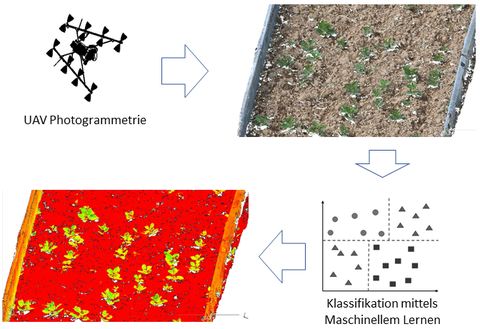Optimising the effects of simple intensive roof greening on building and urban climate, water balance and vegetation in the urban environment through irrigation with grey water
Green roofs and grey water use are aspects of the German climate change adaptation strategy. Green roofs can contribute to improving the thermal environment in urban areas, whereby the cooling effect through evapotranspiration is an important partial aspect. The proposed research project aims to investigate and demonstrate the possibilities and challenges of irrigation with only filtered grey water, which is available all year round in building circuits, under real installation conditions. In addition, the knowledge gained so far is to be validated and the data base for the system solution of simple intensive greening is to be expanded.
The project explores the complex processes of simple intensive green roofs in an interdisciplinary team. The potentials of irrigation, such as increased transpiration, increased retention capacity and improved site conditions, are being recorded. The effects of irrigated simple intensive roofs on building fabric and climate, water balance, surrounding climate as well as vitality and aesthetics of the plantation will be tested and quantifiable for the first time in a cross-section-oriented manner.
Within the framework of the project, a machine learning method will be tested and further developed that allows an automated classification of vegetation from UAV images in order to measure the degree of coverage of roofs. 3D point clouds are calculated photogrammetrically, which contain various radiometric data in addition to the geometric information. This data basis is used to derive different geometric point features on different observation scales as well as radiometric features and to use them for training a classifier.
The project is funded by the Deutsche Bundesstiftung Umwelt (DBU).


